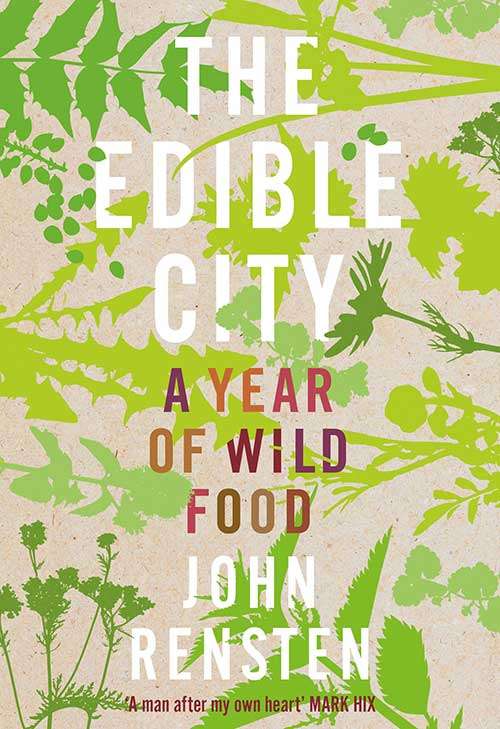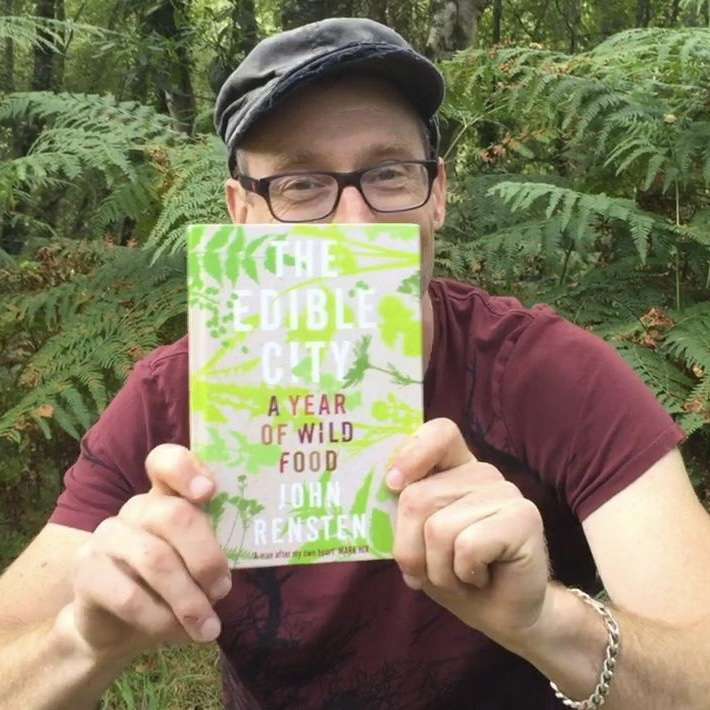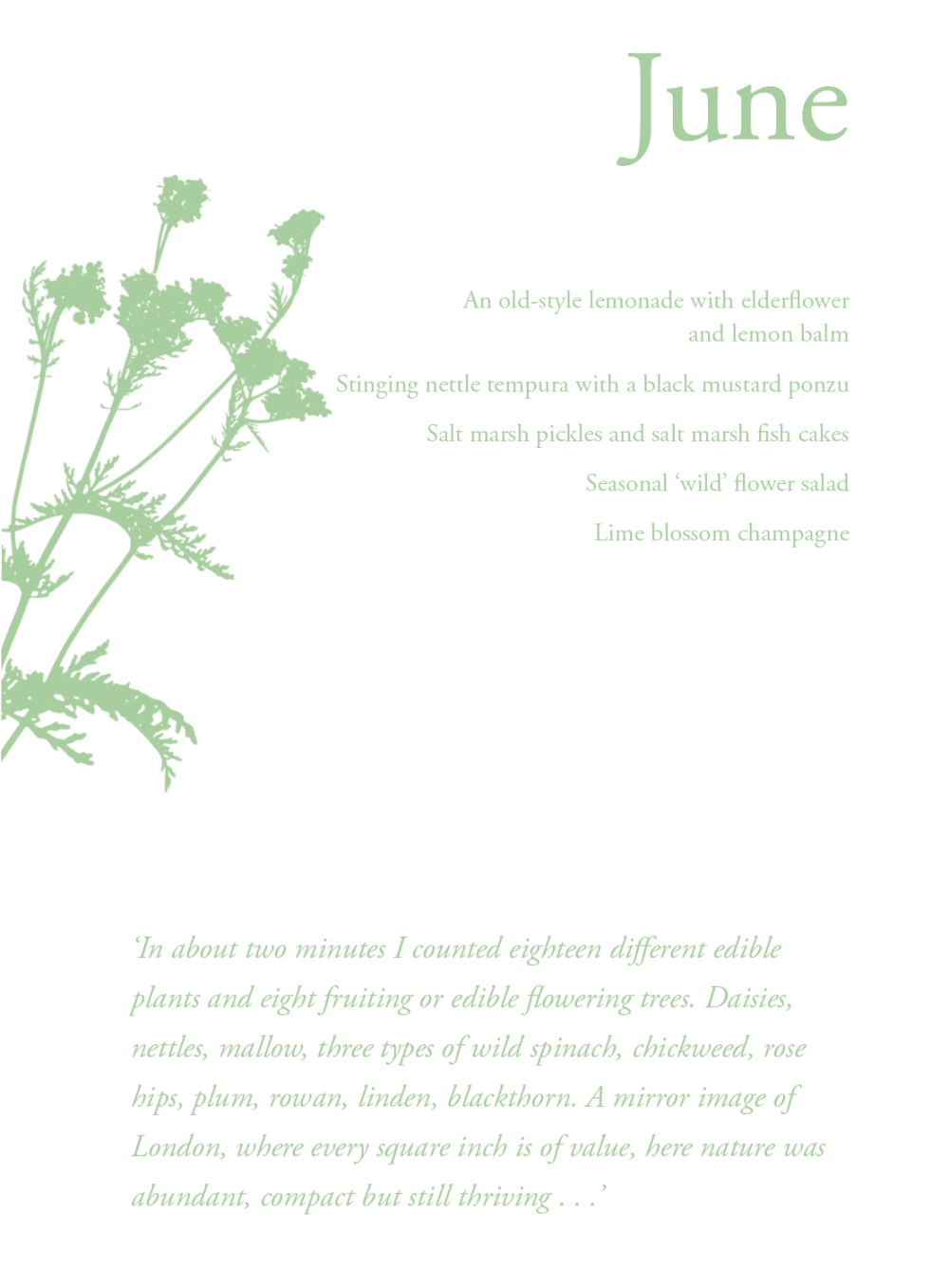
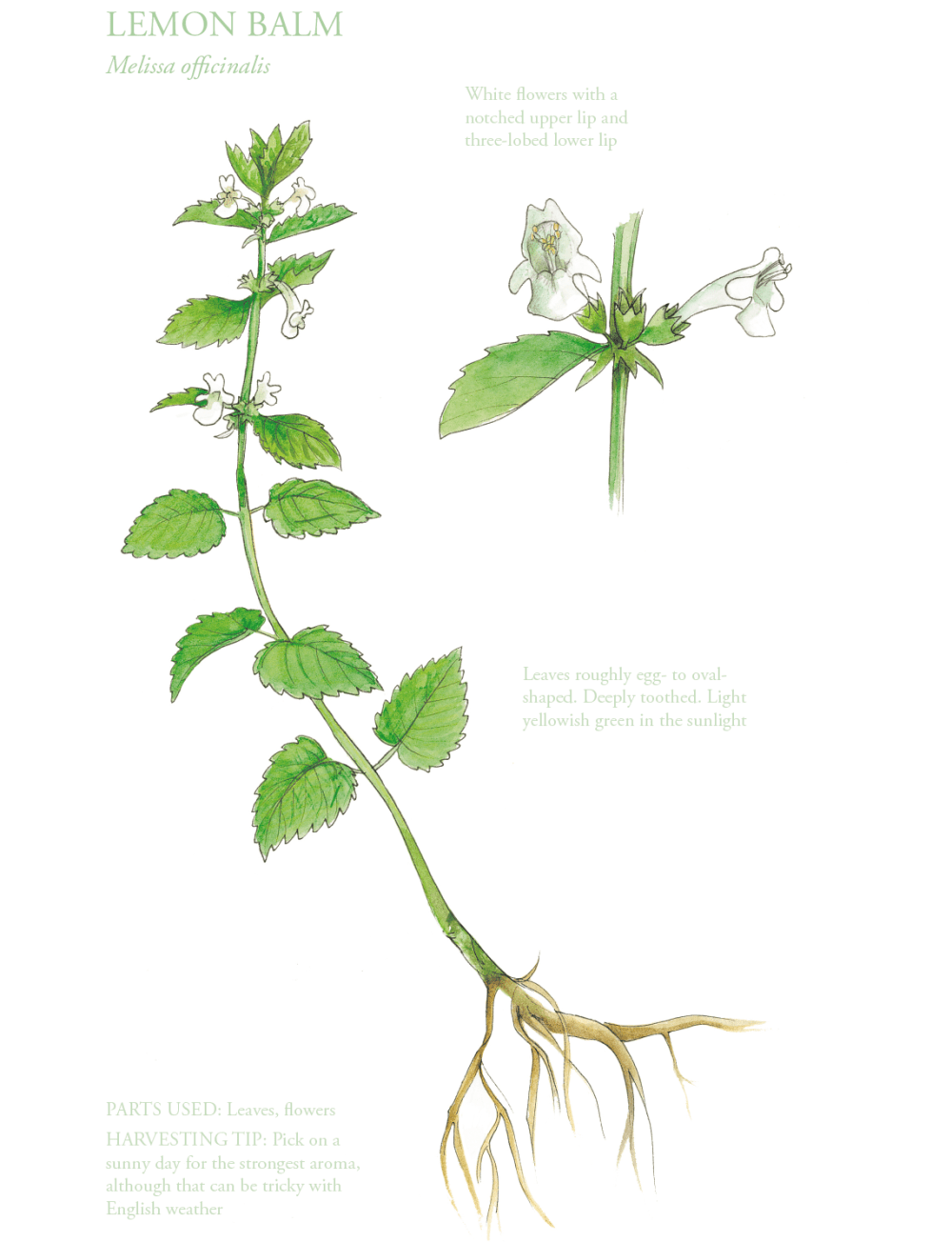
The Edible City – June
5th June. Stoke Newington
Sunshine, blue skies, roadworks and traffic jams. I’m not a huge fan of summer in the city but I never tire of visiting my most local park, an old friend who keeps me sane and always has something interesting to say. Today he says just one word: blossom. Lime, elder, plum and hawthorn all combining to give soft, sweet wafts that come and go as I walk. It’s the elder I’m most interested in today, with an idea already in mind; sometimes it’s the act of foraging that gives birth to a new recipe, other days, like today, it’s the recipe that leads me to hunt for what I need. With so many possible uses for elderflowers, I normally default to the simplest recipes I can think of and when something already tastes and smells so fragrant it would be a shame to smother it with too many other ingredients. This morning it was sunny, a perfect early June day, really, and the ideal time to pick these amazing blossoms, when they are at their sweetest and at their best. An elderflower cordial can succeed or fail entirely on what the weather is up to when the flowers are picked. I like the idea that anything made with these lovely summery blooms is a direct reflection of how the weather was that day. I’m always shocked by just how many elder trees we have in the capital; like so many other things, they hide in plain sight, until they erupt with creamy white blossoms. Identifying elderflower is simple and relies mostly on your nose; once you know that smell you don’t forget it. As a footnote, rowan and dogwood both come out around the same time with vaguely similar, big white sprays of flowers but neither has the wonderful smell and both have very different leaves to elder. It’s not that these two are particularly toxic, more that they will make a lousy cordial, or in my case, the oh so simple to make lemonade.
Heading home today, another plant grabbed my attention, an unassuming-looking patch of greenery begging to join the elderflowers in my bag. Lemon balm is a strongly perfumed relative of mint and, once smelt, its heady aroma is never forgotten. It was instantly obvious that I had found the missing ingredient for the drink I had in mind.
An old-style lemonade with lemon balm and elderflower
This old-style, flat lemonade is probably my favourite thing to make with elderflowers, but in the last few years I have also made elderflower champagne, elderflower Turkish delight, elderflower custard and elderflower fritters.
Alternative uses for lemon balm include roast chicken wrapped in sage and lemon balm leaves, lemon balm ice cream (simply adapt my water mint recipe on page 101), lemon balm infused vodka or simplyas a replacement in any recipe requiring mint or basil.
8–12 elderflower sprays, 6–8 stems of lemon balm, 4–6 heaped tbsp sugar, 2 lemons
Simple is best! Take the elderflower sprays and the leaves of the lemon balm and put them into a large bowl or jug with 1–1.5 litres of water. Add the sugar or honey or any other syrup you fancy so long as it has a mild taste, then halve and squeeze the juice of one of the lemons and add it to the liquid. Throw in the squeezed lemon and put it all in the fridge for 24 hours, strain and taste. Depending on how aromatic your lemon balm leaves are, you may want to add the juice of the other lemon. This drink tastes and smells amazing, but remember to pick your elderflowers early in the day when it’s sunny if you want that lovely floral aroma, not something that resembles cat’s wee. If you have a Soda Stream you could give it some gas but I really like this without. It works equally well using some mint instead of lemon balm or just elderflower on its own. When serving this to friends, pretend the process was infinitely more complicated than it was, then sit back and accept the shower of compliments.
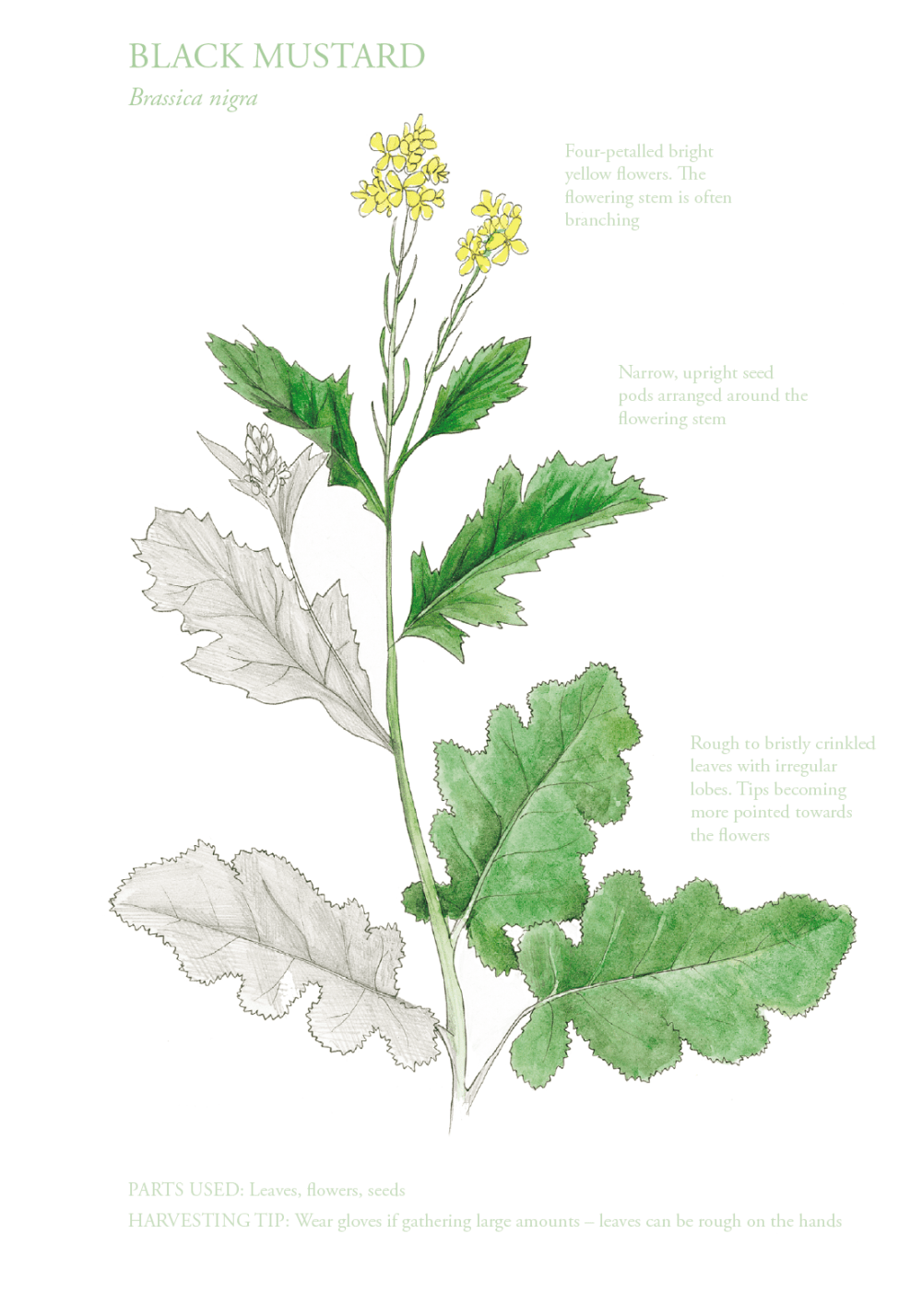
10th June. Somewhere east of the city
Every year, we all seem so shocked that it rains for most of June, but as anyone who has ever been to Glastonbury Festival will tell you, it absolutely chucks it down and this is the seasonal norm. Perhaps we are just such a positive bunch that we annually erase this small truth and replace it with soft-focus, childhood memories of endless hot summers. Today I ran a foraging event for a group of lovely people in an East End nature reserve, scheduled for a couple of hours, and despite the wet weather I ended up talking for nearly four hours straight, enthusing about the capital’s wild plants and their myriad uses, touching, sniffing and tasting them as we went. An area of chalk soil, very unusual for London, produced plants I’m more used to seeing on a West Country clifftop than in the city, including the wonderful-looking and equally well-named viper’s bugloss (go on, look it up) and a late patch of black mustard, which proved a big hit, most of its fiery-tasting leaves a bit wilted but still with hundreds of stunning little yellow flowers. Think cress meets mustard meets wasabi, a flavour bomb packed tightly into a delicate four-petalled flower, just waiting to explode on the top of a salad or soup.
After, rather tired but still keen to check out one patch we hadn’t had time to visit, I found myself surrounded by the most enormous, almost tropical, stinging nettles and wondering, in true ‘plant nerd’ style, whether they were subspecies that produced such freakishly big leaves. I could talk for an hour about ‘stingers’, hence me mentioning them repeatedly in these pages, and so wonderful is this much neglected, wild superfood, with almost unlimited culinary uses, fantastic nutritional value and numerous medicinal applications, it really should be our national dish! So, what to do with these impressive-looking leaves? It struck me that they were the size of small dinner plates and then the answer became obvious . . . Tempura stinging nettle leaves, otherwise known as the Edible Dinner Plate, or at least a side plate big enough to serve a small salad on, eat the salad, then eat the plate. And what a success it was . . .
Stinging nettle tempura with a black mustard ponzu
For the tempura: 4–5 tbsp tempura batter mix, salt, cold sparkling water, oil, nettle leaves
For the ponzu: a good handful of black mustard flowers (or nasturtium leaves and petals), 2 tbsp soy sauce, . tbsp rice vinegar (or white wine vinegar), 1 tbsp lemon juice, 2–4 tsp caster sugar
Tempura is a blend of plain flour and cornflour but I generally buy the ready-mixed version. Being something of a lazy cook, I always prefer the simplest option. I add a little salt to pep it up a bit and make it by combining the mix with some cold fizzy water, stirring with a fork to produce a thin, slightly bubbly batter. Too thin, add more mix; too thick, add more water. To fry the nettles go halfway between shallow- and deep-frying, putting about 5cm of oil into a shallow saucepan. When the oil is good and hot (test by dropping in a spot of batter), I carefully wipe one of my nettle leaves through the batter, turn it over and do the same again, then gently place it into the oil, being sure not to let it fold or wrinkle. It’s the most fun part of the process and easy with a little practice, as is judging how much batter to use – too thick and the batter inflates, too thin and the nettle is too flimsy, just right and after about 1 minute you have the perfect edible plate.
For the ponzu use a handful of mustard flowers – nasturtium petals work well too – crushed and ground with a mortar and pestle until they form a yellow paste. In a small pan, gently warm the soy sauce with the rice vinegar (failing that, white wine vinegar) and the lemon juice. Now add between 2 and 4 teaspoons of caster sugar depending on how sweet you like it, and once dissolved stir in the mustard flower paste. Cool before serving. This is far from a traditional ponzu, which is much thinner and contains a fish and seaweed stock, but it’s the wonderful mix of soy and lemon juice that I was after.
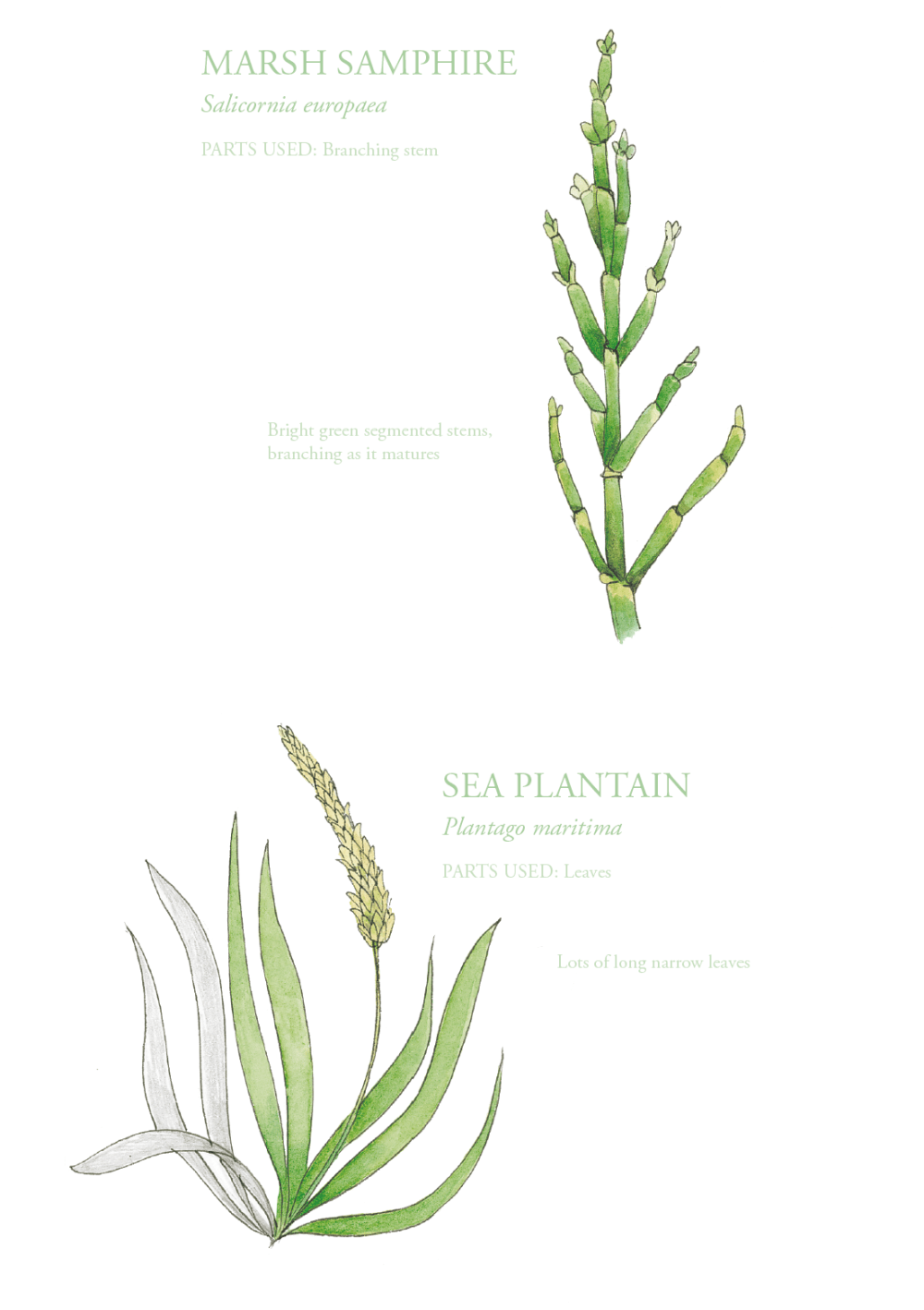
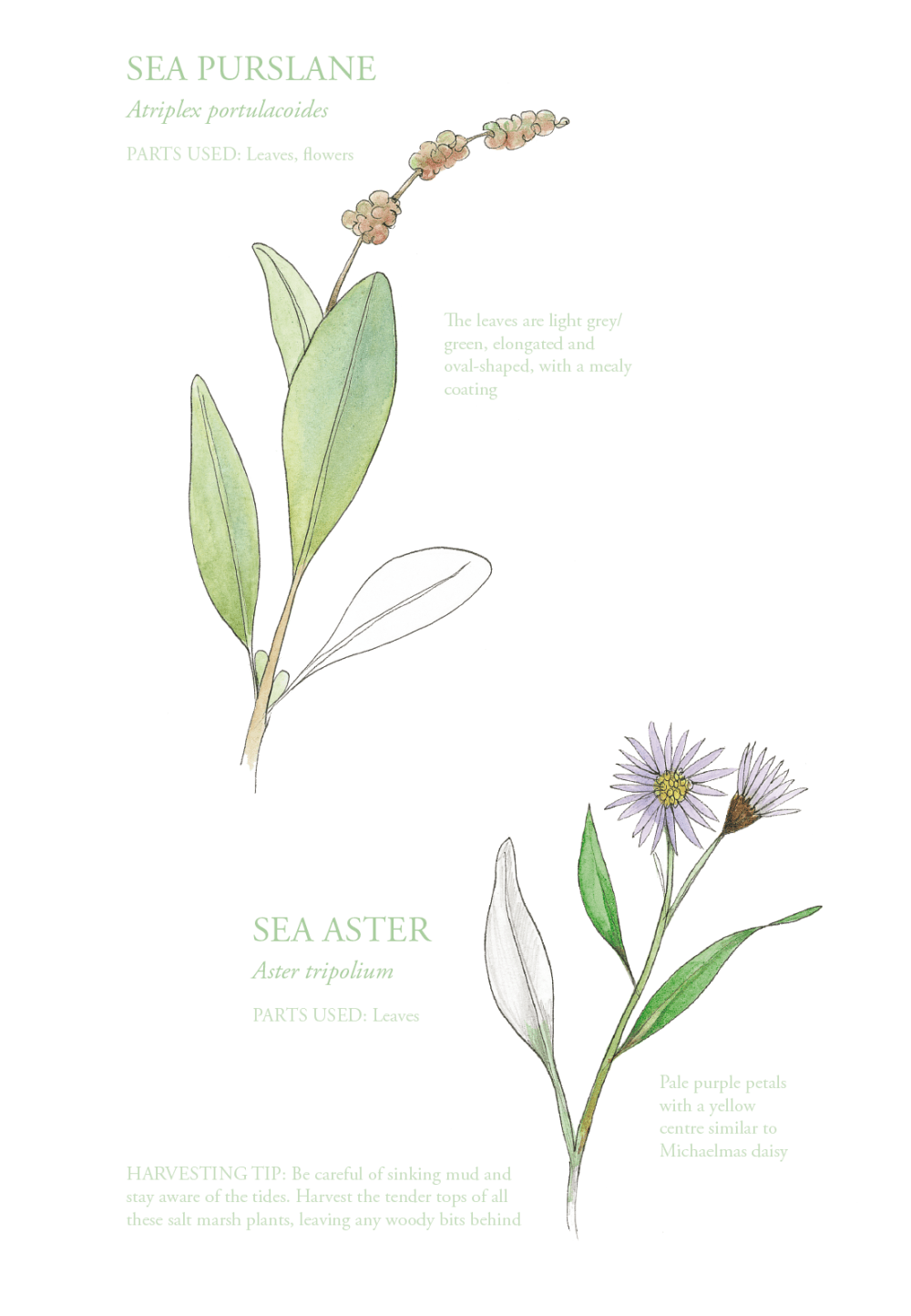
13th June. I have escaped the city
The best place to learn how to forage is in the place you have easiest access to and are able to visit and revisit in all seasons, not just to pick things to eat but to become familiar with the plants you are interested in, at all stages of their development, learning to identify them when their most obvious features are on display and learning when to return to harvest them – often when only the tiniest details are visible. But, and this is quite a big but, to forage properly, we must learn to move around and there are numerous fantastic wild foods that just don’t grow in the city . . . and I want to eat them! Dorset is one of my favourite places on Earth, allowing me to indulge my twin obsessions of rock climbing and foraging. Today was a non-climbing day and I spent it in one of the most fertile places I know, the southern end of Chesil Beach, a fantastic collision of different overlapping environments, where a fresh-water lagoon meets the sea. Salt water, brackish water, fresh water, sand, pebbles, chalky soil and wide salt marshes, all butted up against each other, making for something of a forager’s paradise. My focus today was on the low tide and the salt marsh plants it reveals, the most well known of which is marsh samphire. Imagine an enormous mat of electric green, spiky little fronds, like mini asparagus, stretching over hundreds of metres of the water’s edge and its muddy flats. This carpet effect is common to most of these simple-to-identify, easy-to-pick plants and within half an hour I had all the ingredients I’d need for stir-fries, salads, fish cakes (minus the fish) and a host of other lovely dishes. Before I left this spot, and with ingredients found either right there or from a box I keep in the van, I knocked up some seasonal salt marsh pickles, an excellent way to enjoy these salty vegetables long after they have passed their prime.
Salt marsh pickles and salt marsh fish cakes
For the pickles: various salt marsh vegetables, rice wine vinegar, brown sugar
For the fish cakes: cold mashed potato, smoked mackerel, onion, garlic cloves, marsh samphire, sea purslane, flour, salt and black pepper
Gathered by the sea, washed quickly in fresh water, assembled in the van, photographed on the spot. The first two plants that went into my jar were sea purslane and marsh samphire (also known as glasswort), both in the ‘wild spinach’ family (a loose, not particularly botanical grouping). Like many coastal plants, they have modified themselves to become more succulent than their inland relatives and, as such, more resistant to the harsh coastal conditions, giving them a sweet, salty crunch, which makes them ideal for preserving. To these I added some sea aster (a relative of the daisy), some shrubby sea-blite (a plant described as ‘nationally scarce but locally abundant’), sea plantain and, my absolute favourite, sea arrow grass, also known as coriander grass. I then added a 50:50 mix of rice wine vinegar and water and a few sachets of brown sugar that I ‘borrowed’ from the nearby cafe. Ready to eat in a matter of days, more a Japanese-style light pickle than a traditional English pickle-it-to-death type affair.
I am also very fond of using some of these salty plants to make fish cakes; the samphire tips and purslane leaves seem to work the best. I make burger-sized cakes by mixing cold mashed potatoes, flaked smoked mackerel, coarse ground black pepper and some finely chopped and fried onion and garlic. I stir in a handful or two of washed and chopped salt marsh plants and smoosh the whole lot together with my hands, then form them into cakes, dust in seasoned flour and fry until they are crispy and golden on both sides. Perfect with a dollop of my Hawthorn Relish (page 206) but just as tasty with good old tomato ketchup.
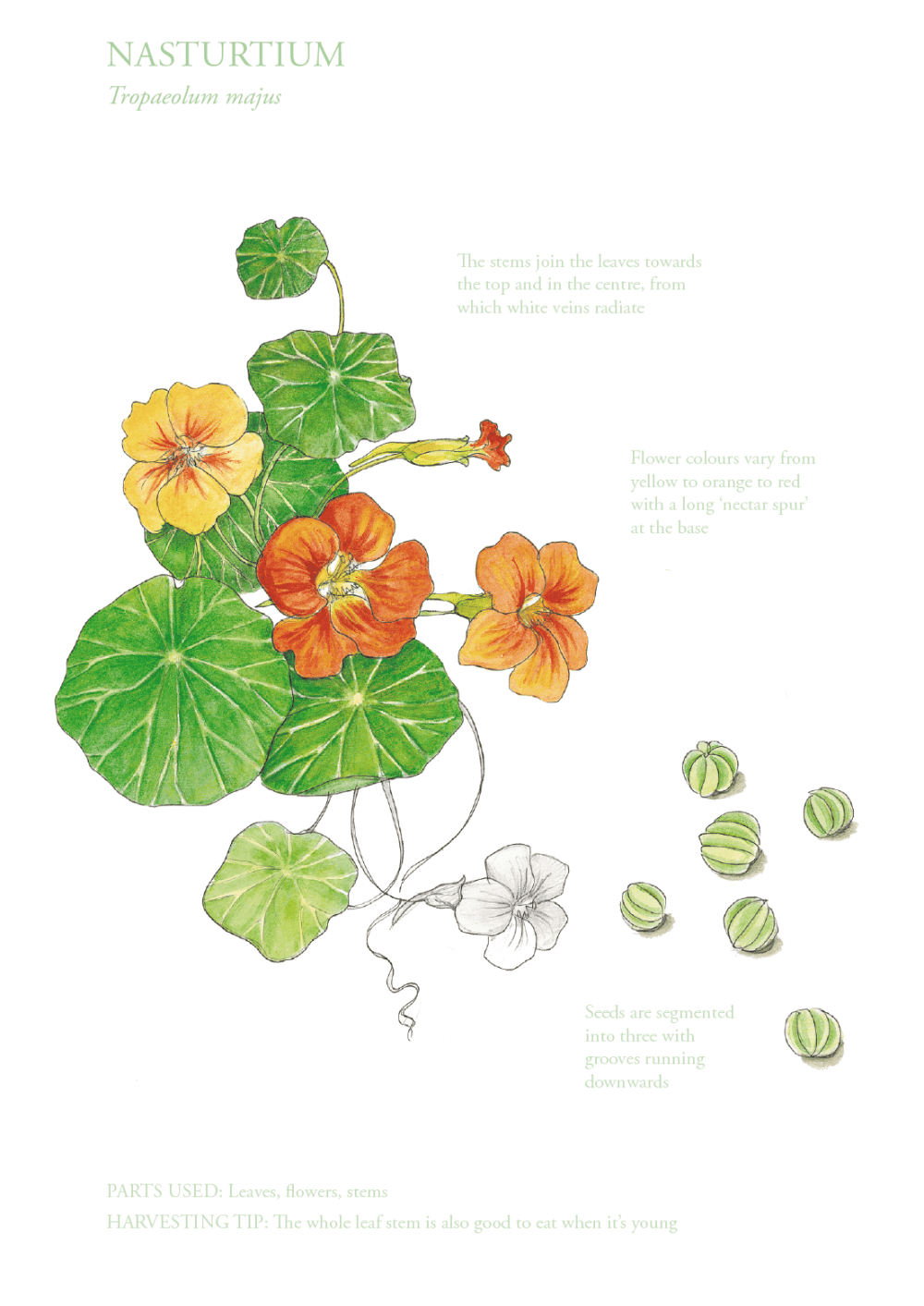
20th June. Crystal Palace
Today I visited Crystal Palace, one of my favourite areas south of the city. On entering the park I was immediately rewarded with some huge swathes of wild (possibly feral) rocket, with big tufts of grey-green leaves and bright yellow, four-petalled cabbage flowers that waved at me from hundreds of yards away. I was also stunned by how beautiful so many of the little front gardens in this area were; great to see that so much love had gone into such small spaces. When I got home, inspired by what I’d seen and more as a never to be repeated experiment than from a strong desire to eat what grows in the front gardens of my busy little London street, I wandered up one side and down the other to see what it would yield. If nothing else it was a nice snapshot of a few of the edible flowers that were in season. I knocked on everyone’s door and explained what I was doing, receiving a generally enthusiastic response and one rather grumpy but totally justified ‘leave my roses alone’.
Usually I pick wild flowers and wild leaves from patches of my local park that are well away from the road and where I have a good idea about the soil quality, but June in London is not the best time for most salad plants. Nature, however, is wonderfully perpetual, and as many of the leaves ‘go over’, out come the flowers. I can’t overstress the need to correctly identify these; some of our most common flowers are also extremely toxic and eating them would make for a horrific experience, let alone a terrible salad. If you are not an experienced forager, a few edible varieties of domestic/garden flowers you may be able to easily identify are: rose, fuchsia, ox-eye daisy, day lily (illustrated overleaf ) – not true lilies, be very careful not to eat any of those – courgette, borage, nasturtium (illustrated opposite), hibiscus, evening primrose and hollyhock. I should add that as with all new foods, a tolerance test is the best, if not the only approach to take. Don’t just steam in and eat a plate full of something you have never tried before, regardless of whether it tastes nice. There’s more about that in the chapter on safety (page 261).
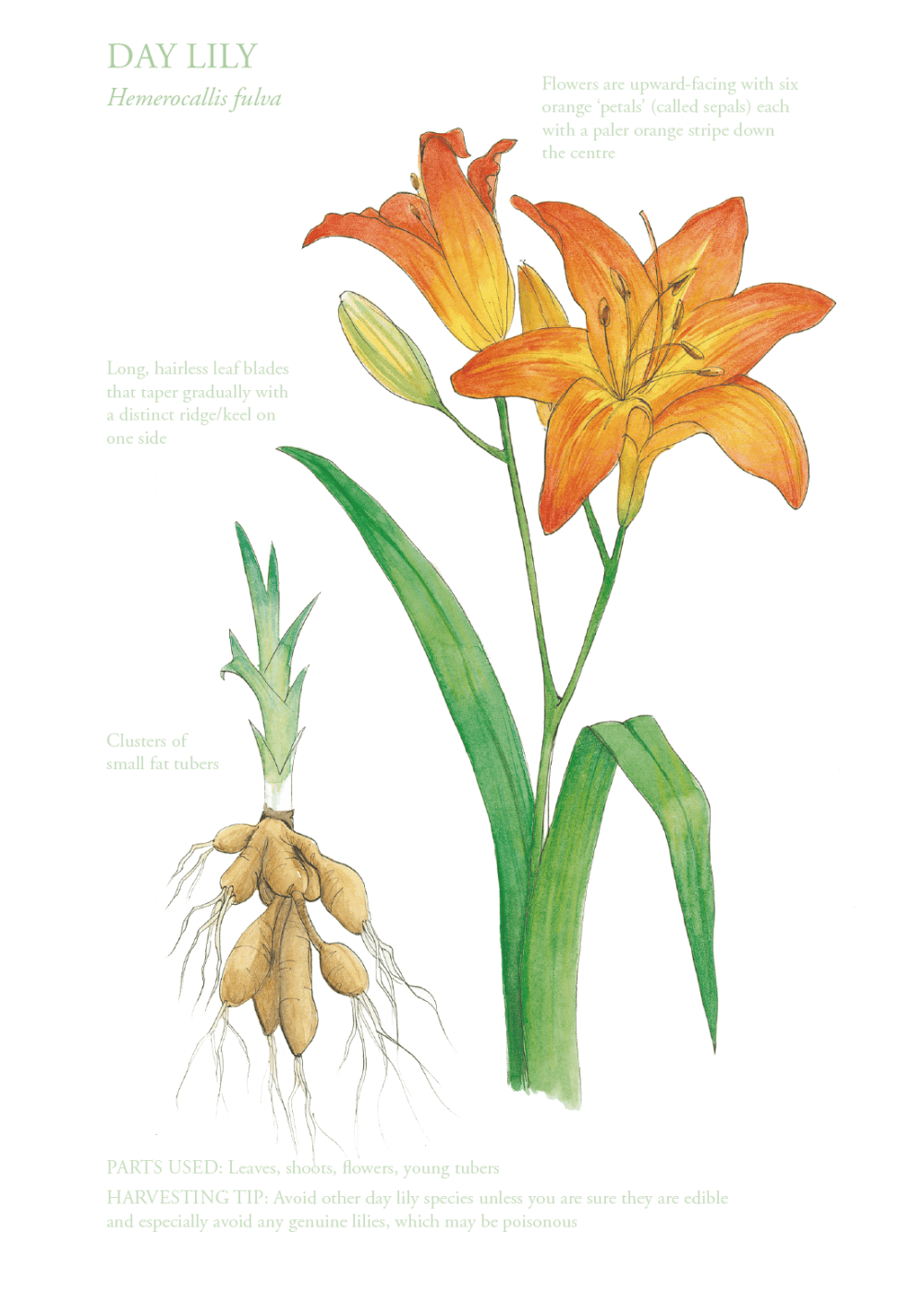
Seasonal ‘wild’ flower salad
Whichever edible flowers you can lay your hands on, rose hip vinegar or sweet vinegar, light olive oil (optional)
For this salad I used a mixture of rose petals, lavender flowers, day lily pods and flowers (although I can find no record of this elsewhere, eating these sometimes gives me a sore throat . . . strange but true, so just have a small bite the first time you try them), linden (also known as lime) leaves, ox-eye daisy petals, fuchsia flowers (more for the look than the taste), wall bellflowers – a member of the Campanula/Bellflower family that grows all over London pretty much year round – and lastly some nasturtium flowers to give it a peppery bite. Before anyone misses the point, no, I’m not advocating that we all start ‘scrumping’ from our neighbours’ gardens and I only took a flower from each, just the one time, OK? The key to making a wild salad, with flowers or leaves, is to allow various strong flavours to exist together, but in small amounts, in and amongst a larger quantity of one or two blander ingredients. In this mix the wall bellflowers and linden leaves are the ‘base’ ingredients, while the other flowers bring a variety of more intense flavours. I tend not to add any oil to flower salads, finding it a bit heavy on some of the more delicate petals, but a little wild rose vinegar (page 198), or a similarly gentle sweet vinegar, helps to bring all the flavours together, as I have mentioned before, enhancing the sweet tastes and ‘taking the top off’ the bitter ones. I make things like this all year long, even in winter when the joys of living in a microclimate provide me with salads and flowers that we more commonly associate with spring.
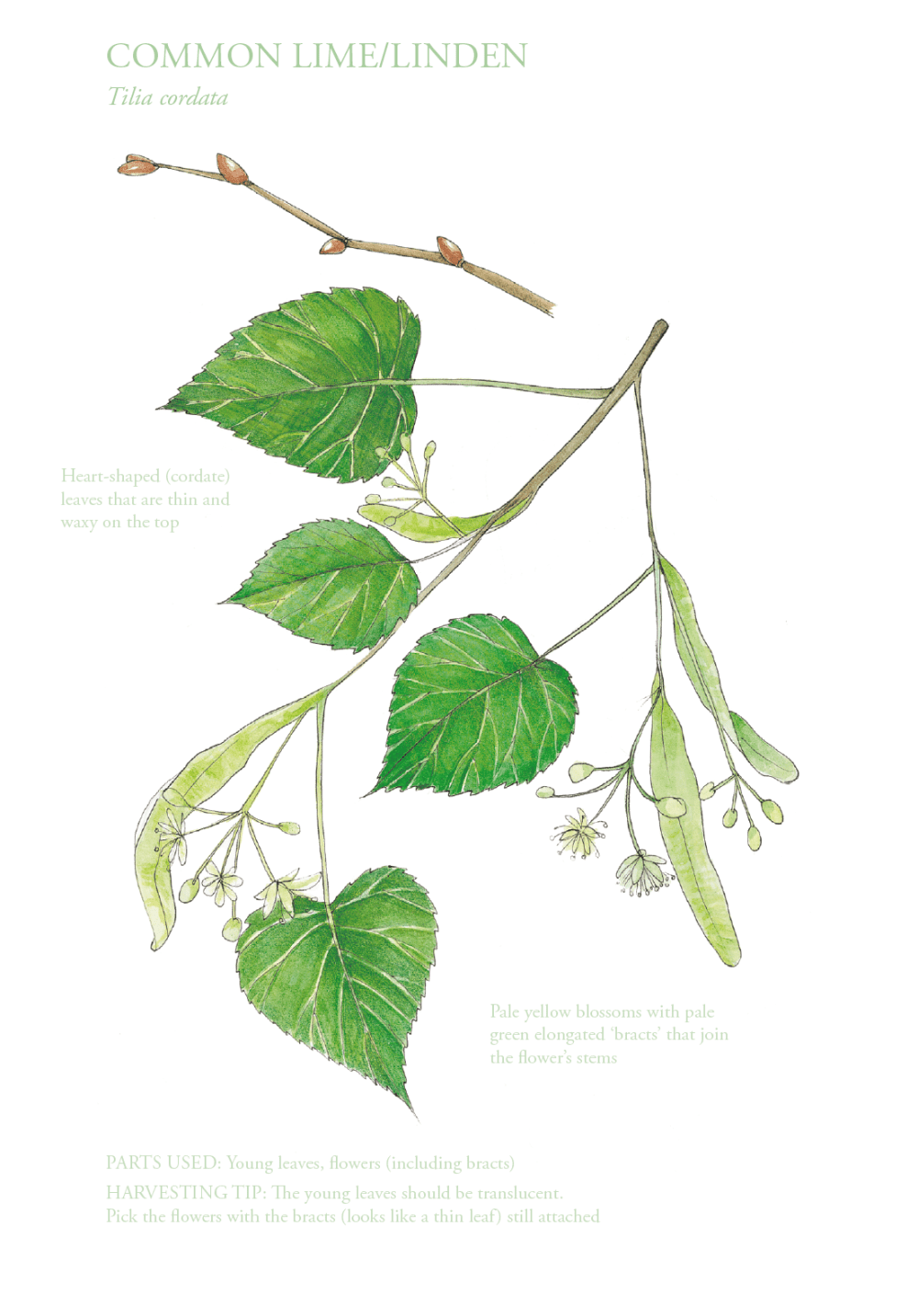
27th June. Almost Regent’s Park, but not quite
I’m often stunned at how green London is, for such a heavily populated, utterly massive city. We have so many green spaces to choose from that it’s pretty much impossible to avoid them, unless you work in that place that bankers call ‘the square mile’, in which case there is almost no greenery and probably even less time to appreciate what little there is. I took my son to London Zoo today and after we left and went to get the car from the small but odiously priced car park over the road, I found myself, as I often do, checking out what was growing in this otherwise unassuming little spot.
‘How often do you go foraging?’ people sometimes ask me, but the question really misses the target. Whether picking something or not, when out and about I am always foraging, accumulating information and absorbing my surroundings in a way that takes no effort and is very similar to looking round a room full of people to see who I recognise. In about two minutes I counted eighteen different edible plants and eight fruiting or edible flowering trees. Daisies, nettles, mallow, three types of wild spinach, chickweed, rose hips, plum trees, rowan, linden, blackthorn. A mirror image of London, where every square inch is of value, here nature was abundant, compact but still thriving.
Foragers exist in a world of cusps and overlaps, constantly transitioning from one ‘micro-season’ to the next, and one of the sweetest of these is the point at which the last of the elderflowers are still out and the first of the lime/linden blossoms appear. Both have sweet scents but very different tastes; the latter reminds me of honeydew melon and the blossoms dry to make a sweet and calmative infusion, popular in France where it’s known as tilleul th.. Lime blossom also makes amazing syrups, sorbets, all manner of wines and liqueurs, and I half knew what I had in mind when I hastily collected a carrier bag full: lime blossom champagne. I’m sure it’s been made before but I haven’t seen a recipe anywhere, so for now I will take the credit for this most wonderful, light and fizzy summer tipple.
Lime blossom champagne
600g granulated sugar, 1 lemon, 20 good handfuls of common lime blossom (or 20–30 elderflower sprays), 2 tbsp white wine vinegar, 1 tsp wine yeast
I made this by adapting the simplest and best of elderflower champagnerecipes, from Roger Phillips’s timeless classic Wild Food, substituting a large handful of lime blossoms for every elderflower spray. This really is a great summer drink and ideal to make as the elderflower disappears and the lime blossom is still at its best. Add the sugar to 1 gallon, that’s 4.5 litres, of water, and warm gently until it dissolves (better still, dissolve the sugar in much less water then add the rest cold). Next, squeeze in the juice of the lemon, quarter the squeezed lemon and throw it in too, then pour the lot into a large sterilized bucket or big container (sluice with boiling water, ideally adding a sterilizing powder specifically for brewing). Add the blossoms and white wine vinegar and give it a good stir. At this stage, you can cover the container with muslin or a thin clean cloth and leave it for 5–7 days while nature and airborne ‘wild’ yeasts do their work, although I usually add a little wine yeast to give it a bit of a head start, but make sure the liquid is no hotter than tepid (40°C) or it will kill the yeast. After this initial fermentation,strain the liquid through muslin, no need to siphon it out as you would with a beer, and put into sterilized screw- or swing-top bottles. It will be ready to drink in about another week but tastes better, slightly drier and fuller flavoured after 2–3 weeks. A generally more sophisticated summer drink than elderflower champagne, at least I think so – but then I would, wouldn’t I?
